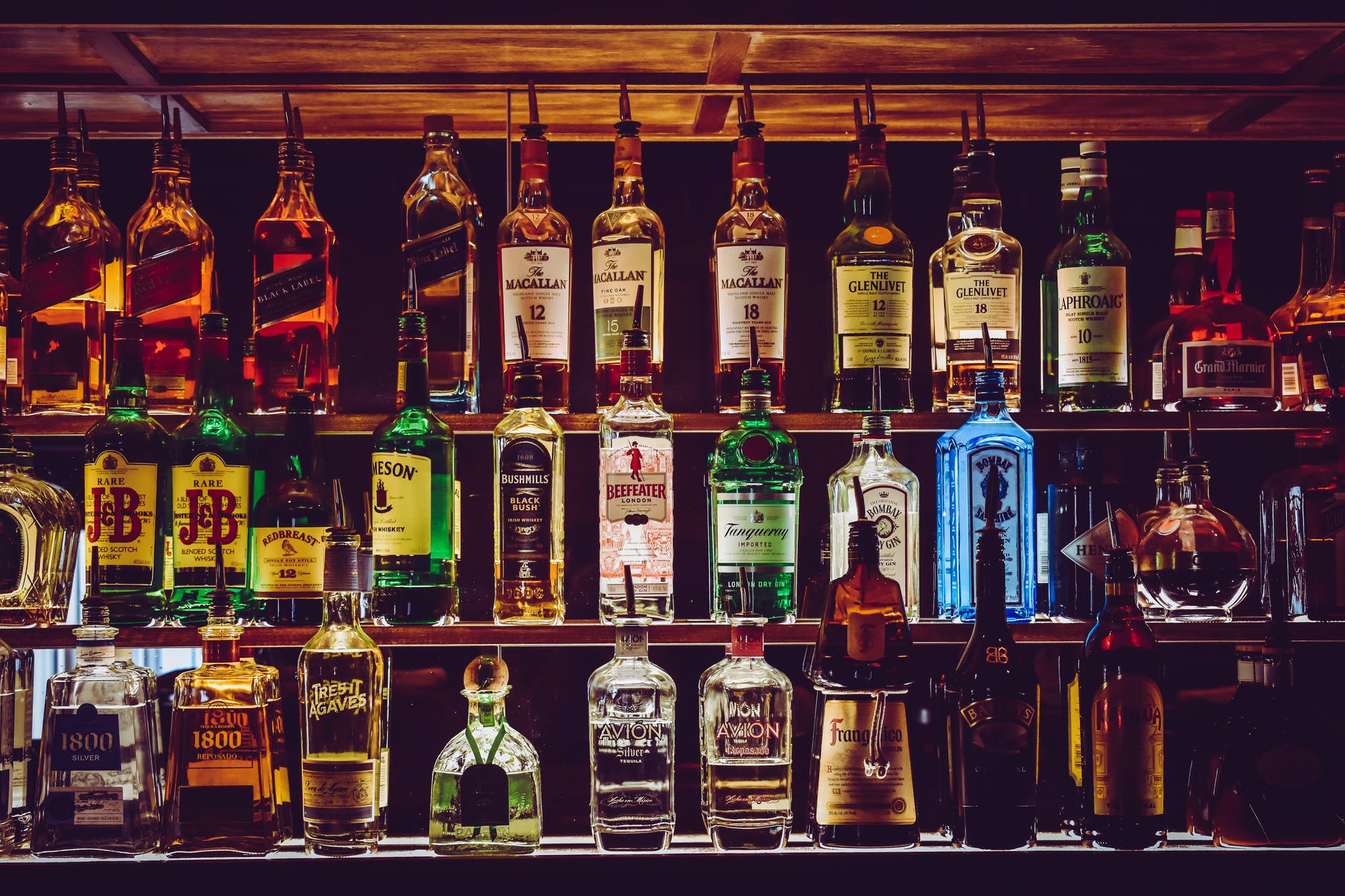
Flashing lights, loud music, 3 a.m. water chug and ringing ears all cumulate to a fun night out. However, club nights out and trips to the bar have gained one unwelcomed trait too frequent to those going out, and that is spiking. The normalisation of spiking is already a worry in itself, but most recently revealed in the U.K., those who participate in the act have found an intrusive and violent new way of drugging party goers. Increasing amounts of reports reveal women waking up the next day to find a small bruise and puncture wound on them. Women have discovered that they have been spiked by injection.
NOT THE KIND OF SHOT YOU HAD IN MIND
Now coined the term ‘needle spiking’, this offers a new threat to many women and men not only on nights out but in general. Reports of spiking are not unusual, but this new method has shocked many, as to the extent people will go to cause damage. Reports on needle spiking have only come from the U.K. so far, but with this set to be a trending yet concerning topic, it’s only a matter of time before others reports come to light, or the behaviour to be adopted. The big question is why this is happening? We know spiking shouldn’t be happening, but the crisis has now been elevated.
SPIKING CULTURE AND THE U.K. CRISIS
Over the past few weeks, ‘needle spiking’ has dominated the headlines and social media. Many victims have shared their horrific stories of things you’d see in movies and hear in scary stories. Spiking has gone from one extreme to another. From pouring more alcohol into drinks, to dropping drugs into drinks and now it’s injecting substances into people. Whilst women are getting fed up with being told how to stay safe, they are still taking severe precautions to avoid spiking dangers. Many are choosing to wear thick clothes of denim and leather to make themselves impenetrable. Some victims who have been spiked by injection have even taken the precaution to get tested for contracted viruses such as HIV.Whilst it’s apparently ‘extremely rare’ to contract HIV through a needle stick injury, we should be looking at the bigger picture and be speechless that people need to have these thoughts in the first place.
As more and more victims share their experiences, it’s given the courage for U.K. male broadcaster, Andrew Castle to share his spiking story. The former British tennis player revealed to his radio show listeners the time his drink got spiked in 2003 on a night out. Illustrating that men can also be the victim to a crime usually associated with male participants, he shared that the women who spiked him tried to take advantage of him whilst drugged.
Nottingham, a city in the U.K revealed they had 44 reports of spiking incidents since September 12th, 12 of those involved ‘something sharp’. As night outs develop a long list of unnecessary risks, many are tired of the lack of response by the government but also by establishments. In response, a boycott of clubs and bars has been encouraged, gaining the hashtag #GirlsNightIn on Friday 29th October. The hopeful result, tighter checks at entry and tougher laws and punishments.

THE U.S. SPIKING SCENE
Whilst there have been no reports of needle spiking in the U.S as of yet, spiking is not uncommon. Reported by the Office on Women’s Health in 2017, someone was sexually assaulted every 98 seconds. 2016 featured over 320k incidents of rape and sexual assault, yet it’s important to note these figures are most likely higher as it’s an unreported crime. The Office of Women’s Health also noted that the top three drugs used for spiking are Rohypnol, GHB and Ketamine as they are not easily detected.
One American TikTok user who goes by @aili.likes.adventure shared her experience of spiking with her 700k followers. In her video she recalls the time a man offered to buy a round of drinks for herself and her friend. After politely saying no, the man continued to stay close to them throughout the evening. Reapproaching them later on in the night, Aili described the man as persistent, forcing them to have the drinks he was forcing on them. Whilst Aili said no and told the man to have it himself, his response was also no. Her friend had the drink and quickly became inebriated. Sharing her experience, she wanted to warn people about the same behaviour.
Whilst we are aware that these ‘dated’ methods of spiking are being used in the U.S, it’s still to be seen whether ‘needle spiking’ will hit the club and bar scenes. I think we can undoubtably say it most likely will. Who’s to say Americans won’t go to the extent seen in the U.K. We already know spiking is a global issue, but once ‘needle spiking’ becomes global, what do we do as a society next? And where will spiking go next after injections become the ‘norm’?
SPIKING CULTURE
Spiking has become a norm in nightlife. As much as groping and street harassment, victims have taken the ‘shrugging method’ to spiking – ‘it is what it is’. Such behaviours which are escalating and becoming more violent and aggressive, why are we treating it so nonchalantly? Placing more focus on the victim than the perpetrator and assault itself, those that have experience being spiked feel blamed. Things like the normalisation of selling drink spiking prevention scrunchies has caused many to lose trust in venues and how they deal with such circumstances. Another example was from a tweet by Durham University’s student wellbeing account stating, ‘Don’t get spiked’. Receiving obvious backlash, the tweet was quickly deleted. In defiance, Instagram account @cheerupluv posted an image stating, ‘Don’t get spiked – how about don’t spike us!’
Speaking to Newstatesman, third year student from Cardiff University, Alice (not her real name) said “There’s this [mantra] of ‘protect yourselves’. We are trying but it’s not working – these perpetrators are finding different ways of getting people into a vulnerable state…It should no longer be up to victims to protect themselves. It should come down to institutions to help us.”
A behaviour and action so repulsive and vile, why is it so frequent? In a 2016 study featuring over 6,000 students across three U.S. universities, the study revealed some reasons for why people spike others. Whilst the action is linked to date rape, motives included ‘to have fun’, for amusement, to calm someone down or to make them go to sleep. Suzanne Swan, the study leader and an associate professor in the department of psychology at the university of South Carolina has commented on the behaviour. In a journal news release Swan stated, “Even if a person is drugging someone else simply ‘for fun’ with no intent of taking advantage of the drugged person, the drugger is still putting a drug in someone else’s body without their consent — and this is coercive and controlling behavior,”
It’s clear to see that one major issue relating to this crime is male violence and misogyny. The fact that they think it’s funny and acceptable to spike both men and women. In some cases, it’s an action with the intent to humiliate and frighten victims than sexually assault. No matter what reason someone has for spiking, it all comes back to the feeling of having power over someone else. Another issue which Swan brought to light was the issue of consent. “Just as people have a fundamental right to consent to sexual activity, they also have the right to know and consent to the substances they ingest,” said Swan.

SPIKING’S ANECDOTE
Victims are looking for meaningful responses to this ever-growing issue from councils, governments and venues. One solution which victims and supporters against spiking are putting into action is making it a legal requirement to do thorough searches at nightclubs before entry. Whilst this could be beneficial, others have voiced their concerns. Speaking to Newstatesman, 23-year-old Mair Howells who’s been spiked says “Even for women, I’ve been made to feel unsafe by security guards, so giving them more power to me is scary”.
Howells, who founded the #ivebeenspiked campaign is calling on the government to do more. Speaking to Happiful, she says “The government should require bars, clubs and pubs to take greater precautions in order to prevent it, increase education around spiking and the laws surrounding it, make testing more available, and put in place arrangements to provide after care for those who have been spiked.”
A circumstance we do not want to experience, with all these ‘needle spiking’ stories, what is the likelihood of actually experiencing such? Senior scientist at drugs charity the Loop, Guy Jones states to Vice “Injecting adds a big ‘what?’ factor to the whole thing because few drugs would be able to be injected like this…”. Whilst there may be only a handful of drugs that could be administered this way, there’s no doubt that strong substances are being given to people through injection from the sheer number of reports.
More naively, emergency medicine consultant and founder of drug testing project WEDINOS, David Caldicott said: “There are a couple of things that are disconcerting about this story. The technical and medical knowledge required to perform this would make this deeply improbable…… The idea that a clubber would do this to a fellow clubber seems highly unlikely to me.” I think it’s difficult to take this seriously due to reports, evidence and the fact that people already put drugs into drinks. It doesn’t take much imagination to believe some will inject others to get their power kick.
To check out Malin’s bio click here.
Malin’s other posts –
The Side Hustle | The New Norm
The Race To Tour Space | Going Where Others Have Gone Before







